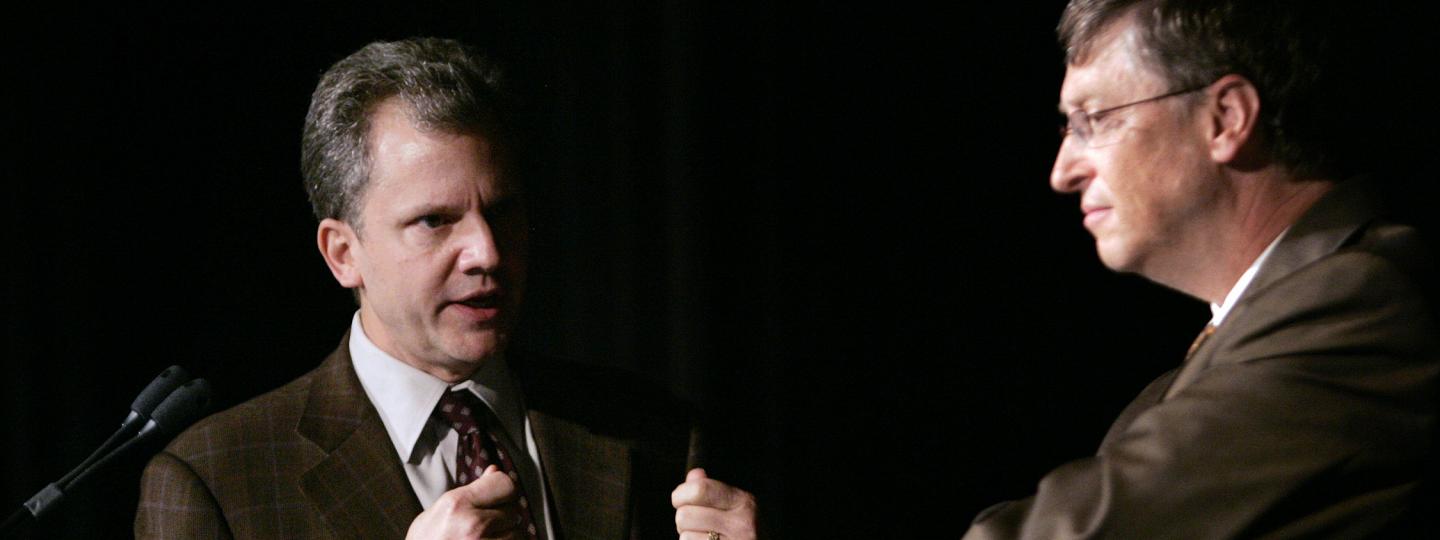In 1933, managing editors, who were in the trenches putting out the newspaper every day, decided they needed an organization of their own. Eleven years earlier a group of high-minded top editors had formed the American Society of Newspaper Editors to elevate the professionalism and ethics of the business.
"There were always cultural differences," Jim Simon, current president of the Associated Press Media Editors (known as the Associated Press Managing Editors until a name change in 2011), told me after the two organizations announced their merger last week. "They were the number ones; we were the number twos."
"But in recent years our missions and priorities have grown to be basically identical," Simon continued — diversity, First Amendment issues and advocacy for vigorous journalism as the profession comes under attack.
ASNE is the larger organization, but this is not simply a takeover. Part of the merger discussion was agreement on both sides that the industry needs "a whole new organization for news leaders," said Alfredo Carbajal, ASNE president, in a separate interview.
The new organization will have a revised mission and ultimately a new name (both to be determined) Simon and Carbajal said.
The two organizations have been holding joint annual conferences for several years. This year's edition in Austin will be the fifth, scheduled for September so as to be back-to-back with the booming Online News Association meeting.
APME's board had been "flirting with the idea" for some time, then swung into action as both membership and finances deteriorated, according to Simon. Membership has dwindled from the hundreds to about 75.
The Associated Press's contribution through the years has been to provide a part-time director from its staff and to handle other administrative matters. Some version of that may continue in the merged organization (ASNE does have a professional executive director, Teri Hayt).
Both organizations have opened membership in recent years to editors of digital and other non-newspaper news sites. Simon, a veteran editor at The Seattle Times, moved last year to become managing editor of Honolulu Civil Beat, philanthropist Pierre Omidyar's digital site in his home city. Carbajal is editor of Al Día, the Spanish-language sister publication of The Dallas Morning News.
For another year, there will likely be separate contests and foundations — each sponsoring training programs. But those will come together before long.
APME's history traces a trajectory from tranquil good times through the 1900s and early 2000s to an ever-so-stormy last decade.
Both the organization and its annual conference were a form of outreach to subscribing newspaper customers for the AP. As recently as the October 2010 conference, held at Poynter, then-CEO Tom Curley and other AP brass attended and schmoozed.
My colleague Bob Haiman, president emeritus of Poynter, has belonged to both organizations for many years with an especial fondness for APME. Back in the day, Haiman recalled, a major activity was "continuing studies" committees that produced detailed annual recommendations for AP's coverage of general news, sports and other topics. Former presidents still meet for an annual dinner Haiman organizes.
ASNE, for its part, held huge conventions, with attendance around 1,000 in peak years. Appearances by the president were a staple. In 2008 at a joint meeting in Washington with publishers, Barack Obama, Hillary Clinton and John McCain all spoke in person. The conference once extended over five days, concluding with a black-tie dinner.
More recent annual meetings have had a more practical cast with leadership and digital transition atop the agenda. Sessions on working with the business side to create new revenue streams have also grown common.
Even more recently, as the economics of the industry become especially pinched, once-distinct editing functions have melded. Top editors at titles in chains like Gannett and McClatchy may also oversee a regional group. Smaller papers often have a managing editor but no on-site higher-ranking top editor.
Digital editors and product specialists now have joined the top level of managers. Carbajal also said that the new organization will broaden rules to admit interested editors below the masthead level.
Editorial page and opinion editors merged their Association of Opinion Journalists into ASNE two years ago, donating the majority of a remaining endowment to provide training for minority opinion journalists at Poynter.
On the business side, four organizations remain, though the News Media Alliance (formerly the Newspaper Association of America) this year folded its annual meeting into the so-called Mega-Conference put on by the other three groups — Local Media Association, Inland Press Association and Southern Newspaper Publishers Association.
In recent months the ASNE has joined with the News Media Alliance to lobby for relief on tariffs on Canadian newsprint — a crippling price shock in an already tough year. It is safe to bet on more of that kind of common cause and still more consolidation before long.







